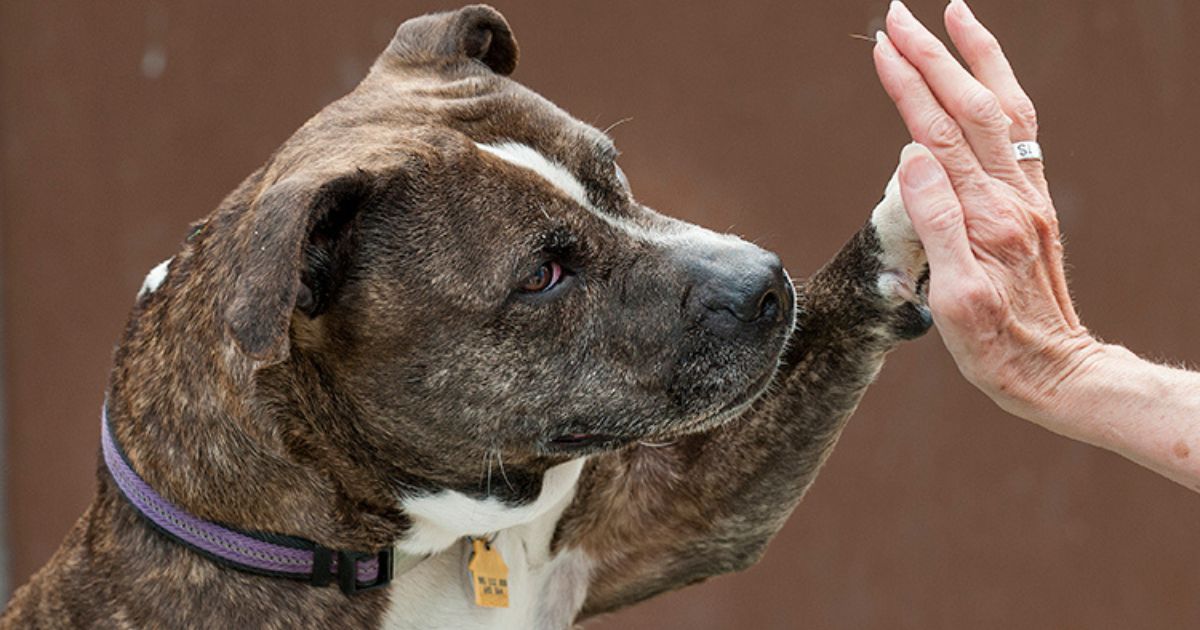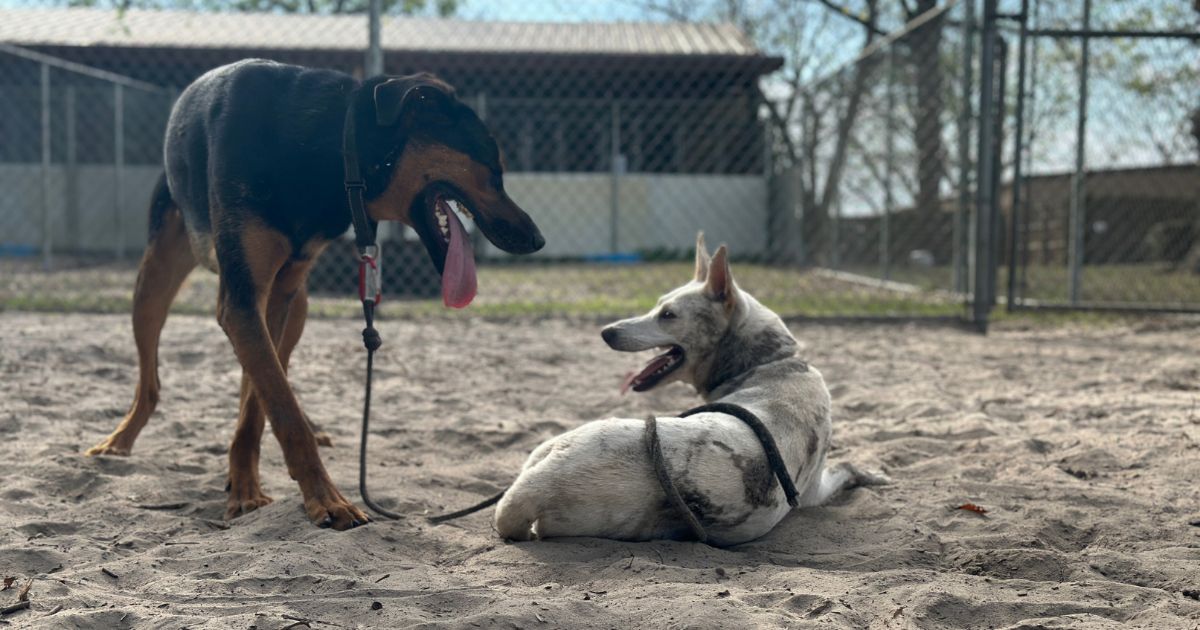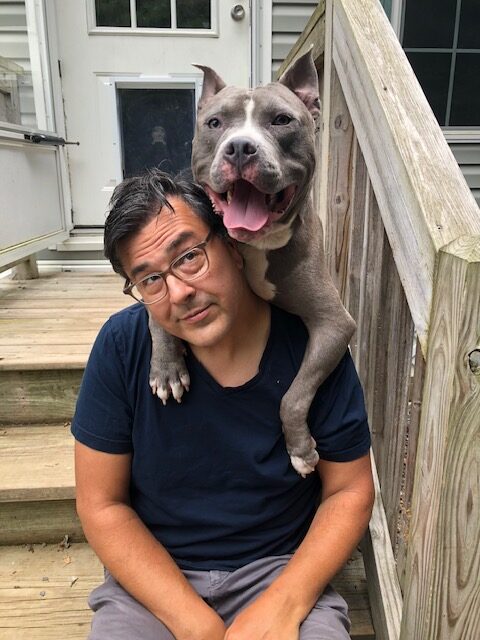In recent years, things have been looking up for the dogs we call “pit bulls” and their families. Breed specific legislation is on the way out. Shelters that discriminate against dogs based on appearance are the exception. The old wives tales that fueled canine discrimination have been debunked and dismissed.
Except for one: Some people are still perpetuating the myth that “pit bull” dogs bite differently than other dogs. Unfounded claims persist about the severity and nature of incidents involving “pit bull” dogs versus other types of dogs. Claims about the “unique damage that ‘pit bull’ dogs inflict” are made by individuals or special interest groups with no experience in analyzing dog bite-related injuries or knowledge of dog physiology or behavior.
Let’s bust this myth once and for all.
First, it must be understood that “pit bull” is not a breed. Attempts at legal definitions of what a “pit bull” is are outrageously inconsistent and no breed club or genetic definitions exist at all. Visual identification of dogs of unknown origin is also highly unreliable. Quite frankly, you don’t know a “pit bull” dog when you see one. It’s a highly subjective label with no agreed upon definition.
But even if you think you’re the exception (hint: you’re not) and know a “pit bull” dog when you see one, know this: research shows that breed is a very weak predictor of behavior in modern purebred dogs. Modern dogs are bred almost exclusively for appearance. If you think that two dogs who look identical will behave the same (including how and when they bite), you’ve shown a profound lack of sophistication in understanding dog breeding and genetics. Even cloned dogs – all the same DNA – don’t behave identically.
Yet some still insist we can predict how hard a dog will bite or what sort of damage he will do based on his physical appearance.
The result is false statements like: They don’t bite more often, but if a pit bull does bite, he’s far more likely to inflict serious injuries than most other breeds. Or, since their jaws are different than other dogs, they cause more damage when they do bite. And, they don’t inhibit their bites, so they may cause injury more often than other dogs. Or this tired myth, pound for pound pit bulls have the strongest jaws of any animal.
These statement are FALSE. They’re all baseless. No such claim has ever been demonstrated anywhere in the scientific literature!
And yet they are often repeated by medical authors and legislators who have no knowledge of dog behavior or even of the origin of these myths. Most of these ideas, in fact, can be traced back to the claims made to a reporter for the LA Times in 1980, by an individual identified only as “the dog fighter.”[i] One story has spawned decades of myths. Thanks a lot, Internet.
While it is widely observed among dog professionals that individual dogs vary in bite and fight “styles” (that is, when the dogs are upset enough to bite), there has been no academic study of this and certainly not with regard to breed differences. Even general conflict and self-defense behavior can’t be shown to vary according to breed, so it’s implausible in the extreme that a very specific subset of behavior, like duration of sustaining a bite, would have breed correlations.
Nor is there any credible data on bite injury severity by breed. Some reports by physicians make the claim that “pit bull” dogs are over-represented among severe injury cases, but all rely on visual breed identifications which research proves is unreliable. This is unsurprising, as the most comprehensive study to date of dog bite related fatalities has demonstrated that even in these intensely investigated cases, it is impossible to reliably identify the breed(s) of dog(s) involved in the vast majority of cases. [ii] Newspaper reporters, doctors, legislators, even so-called dog professionals continue to perpetuate these myths based on hearsay, hype, and unreliable information.
There are no facts to back up the oft-repeated claim that “pit bull” dogs bite differently or cause more damage than other dogs.
Wildly varying claims are also made regarding the potential closing pressure of dogs’ jaws. The results of the handful of studies that have looked at this are ambiguous at best.
What is clear is that no scientist has ever found anything even remotely close to the ridiculous claim that “pit bull” jaws have the capacity to bite with 2700 psi. Never.
The research that does exist is an offshoot of studies of other species, mainly attempts to determine how much force an animal may be able to apply in eating his food. Across species, the general finding is that the pressure available matches what’s needed for the particular food available. Along these lines, a few scientists have attempted to measure potential jaw force in dogs. Neither of the two study groups that specify breeds include any dogs identified as “pit bulls.”
![[iv] Ellis JL, et.al. (2009). Cranial dimensions and forces of biting in the domestic dog. Journal of Anatomy 214. 362-373.](/wp-content/uploads/2015/08/ellis-jl-cranial-dimensions-and-forces-of-biting-in-the-domestic-dog-journal-of-anatomy.jpg?w=640)
So any bite force claim regarding “pit bull” dogs is simply made up, or perhaps the product of some unscientific backyard “experiment” reminiscent of the shadowy figure of “the dog fighter,” to whom so much of this mythology can be attributed.
The actual findings that do exist among dogs in general can range from 13 to 1394 Newtons. “Newtons,” a way to quantify force, is the unit of measure consistently used in such studies, not pounds per square inch, a measure of pressure which no studies use.
Stick with us here: Four different methods of studying jaw force have been tried. One method has been to perform a geometric analysis of potential leverage based on the top and bottom jaw structures.[iii],[iv] A second method has been to electrically stimulate the jaw muscles of anesthetized dogs to close, focusing on various muscle groups.[v] This yields the highest numbers, presumably because unconsciousness renders a dog less concerned about breaking his teeth or even his actual jaw bones. These two methods attempt to measure how much pressure a dog would have at his disposal should he choose to use maximum force, which no one in behavior, by the way, thinks dogs normally do in conflict situations. A third method involves hooking up electrodes to the jaw muscles of a dog chewing a bone.[vi] And finally, a device called a transducer has been contrived to sense the force exerted on a chew object offered to a dog.[vii]
Some of these have been applied to compare potential jaw pressure of varying sizes and skull shapes. These four different methods yield different results. The anesthetized dog method, for example, has found that bite force increases if not proportionately, at least significantly, with the size of the dog and with shorter jaws and wider skulls in medium and large dogs. Other studies don’t find this.
Among the few studies that specify breeds of the subjects, one tested two Rottweilers of similar size: one dog bit down on the rawhide covered “transducer” with more than three times the force of the other.[viii] There has even been a rather silly attempt to loosely apply this study technique for the entertainment of television audiences, by putting a pressure sensing device into a heavy Kevlar sleeve which the handler then entices three dogs of different breeds to grab onto and shake as if his arm were a tug toy, without any way of knowing what part of the object was being borne down on, which teeth were being brought to bear (real studies always distinguish between pressure from molars and canines) or even the effect of the varying weights of the dogs on how much pressure they would need to hang on. In this case, it was solemnly concluded that the “pit bull’s” jaw pressure was less than that of the German Shepherd Dog or the Rottweiler, but this finding renders the “experiment” no less foolish.
But not one single study backs up the bite force claims about dogs that are constantly cited in media, ordinances, and sloppy scholarship in studies of dog bite injuries. NOT ONE.
All dogs, of any breed, mix, or size, with teeth have the ability to significantly harm us if they choose to do so. They very seldom do. Conflicts between dogs and people are highly ritualized, at least from the dog’s side. In other words, dogs typically “pull their punches,” even when trying to influence our behavior by using their teeth. The technical term for this is acquired bite inhibition (ABI). No one believes that this learned behavior is in any way breed specific.
Finally, the American Veterinary Medical Association (AVMA) exhaustive review of dog bite studies conducted in North America and elsewhere has concluded that, “Serious bites occur due to a range of factors,” and that separate regulation based on breed is not a basis for preventing such dog bites.
To put it simply:
No dog is biologically equipped with a unique jaw structure, locking mechanism, biting mechanism or “style” that would differentiate them from other breeds of dogs.
No scientific research exists to substantiate the myth that “pit bull” dogs bite differently or more severely.
It’s time to put an end to this last myth.
Resources regarding effective approaches to reducing dog bite-related incidents can be found here.
[i] “Dogfighting: Illegal but Proliferating ,” Los Angeles Times, March 3, 1980
[ii] Patronek, et.al. 2013. Co-occurrence of potentially preventable factors in 256 dog bite-related fatalities in the United States (2000-2009). Journal of the American Veterinary Medical Association, 243 (12), 1726-1736.
[iii] Ellis, JL, et.al. (2008). Calibration of estimated biting forces in domestic canids: comparison of post-mortem and in vivo measurements. Journal of Anatomy 212. 769-780
[iv] Ellis JL, et.al. (2009). Cranial dimensions and forces of biting in the domestic dog. Journal of Anatomy 214. 362-373.
[v] Ellis, 2008.
[vi] Dessem, D. et.al, (1988) Interactions between jaw-muscle recruitment and jaw-joint forces in Canis familiaris. Journal of Anatomy 164, 101-121
[vii] Lindner, DL, et.al. (1995). Measurement of bite force: A pilot study. Journal of Veterinary Dentistry 12. 49-52.
[viii] Lindner






